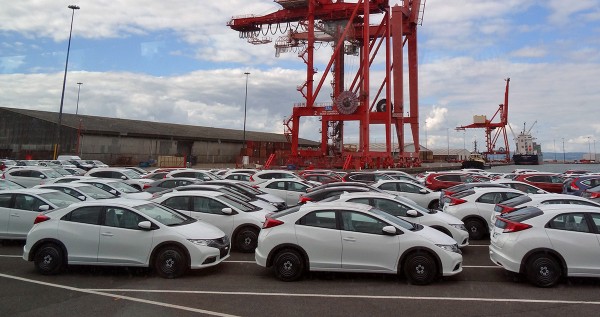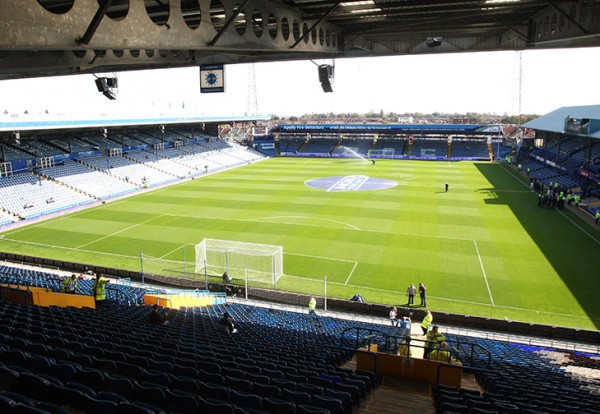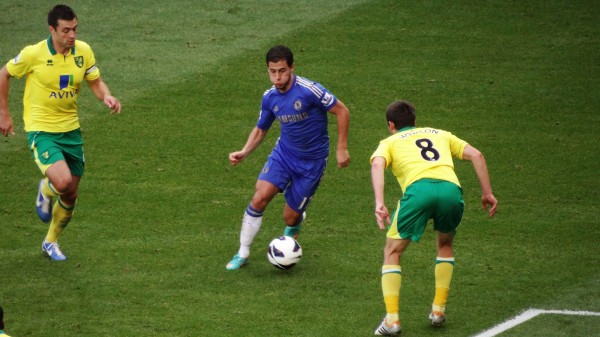 The European Commission has recently carried out a number of investigations into the various sectors of the industry that supplies parts to car manufacturers. Firms have been found guilty of engaging in anti-competitive practices in the supply of bearings, wire harnesses and the foam used in car seats. The latest completed case relates to firms that supply alternators and starters – both important components in a car engine.
The European Commission has recently carried out a number of investigations into the various sectors of the industry that supplies parts to car manufacturers. Firms have been found guilty of engaging in anti-competitive practices in the supply of bearings, wire harnesses and the foam used in car seats. The latest completed case relates to firms that supply alternators and starters – both important components in a car engine.
On January 27th the European Commission announced that it was imposing fines on some Japanese manufacturing companies. Melco (Mitsubishi Electric), Hitachi and Denso were found guilty of participating in a cartel between September 2004 and February 2010 that restricted competition in the supply alternators and starters to car manufacturers.
The Commission gathered evidence showing that senior managers in the three businesses held discussions about how to implement various anti-competitive practices. These either took place on the phone or at meetings in offices/restaurants. In particular the firms agreed:
|
|
| • |
to co-ordinate their responses to tenders issued by car manufacturers. This involved them agreeing on the price each firm would bid. |
| • |
to exchange commercially sensitive information about pricing and marketing strategies. |
| • |
which of them would supply each car manufacturer with alternators and starters. |
These activities are in breach of Article 101 of the Treaty on the Functioning of the European Union (2009). The European Commissioner for Competition, Margrethe Vestager, stated that:
“Today’s decision sanctions three car part producers whose collusion affected component costs for a number of car manufacturers selling cars in Europe, and ultimately European consumers buying them. If European consumers are affected by a cartel, the Commission will investigate it even if the cartel meetings took place outside of Europe”
The fines imposed on the three businesses were as follows:
– Denso €0
– Hitachi €26 860 000
– Melco €110 929 000
How are these fines calculated? When calculating the size of the fine to impose on a firm the Commission takes into account a number of factors. These include:
|
|
| • |
the size of its annual sales affected by the anti-competitive activities. |
| • |
its market share. |
| • |
the geographical area of its sales. |
| • |
how long it had taken part in the cartel. |
| • |
whether it had previously been found guilty of engaging in anti-competitive practices. |
| • |
if it initiated the cartel in the first place i.e. was it the ring leader? |
In this particular case the size of the fine imposed on both Hitachi and Melco was increased because they had both previously been found guilty of breaking EU competition rules.
If a member of the cartel comes forward with information that helps the Commission with its investigation, a reduction in the size of the fine can be applied under a provision called a Leniency Notice (2006). Timing as well as the quality of the information provided influences the size of this reduction. For example, only the first firm to come forward with relevant information can receive a reduction of up to 100% i.e. obtain full immunity. This explains how Denso could be found guilty but not have to pay a fine. (This firm’s initial approach to the Commission actually triggered the investigation.) Any subsequent firms that come forward with information receive smaller fine reductions. Hitachi and Melco received reductions of 30% and 28% respectively.
If a firm accepts the Commission’s decision a further reduction of up to 10% can be applied. This is called a Settlement Notice (2008). All three firms were awarded the full 10% discount in this case.
The European Commission is currently investigating the behaviour of firms that supply car thermal systems, seatbelts and exhaust systems.
Articles
Car parts price-fixing fines for Hitachi and Mitsubishi Electric BBC News 27/01/16
EU antitrust regulators to fine Japanese car part makers: sources Tech News 26/01/16
Mitsubishi Electric and Hitachi get $150 EU cartel fine Bloomberg 27/01/16
EU fines Mitsubishi Electric, Hitachi for car part cartel Reuters 27/1/16
Questions
- What market conditions would make the formation of a cartel more likely?
- Draw a diagram to illustrate the impact of a profit maximising cartel agreement on the price, output and profit in an industry.
- Draw a diagram to illustrate the incentive that each firm has to cheat on an agreed cartel price and output.
- Why did the European Commission introduce Settlement Notices?
 Most observers were once again left stunned by how much media companies are willing to pay to secure the rights to broadcast live games in the English Premier League (EPL). At the same time the method used to sell those rights is being investigated by Ofcom following complaints made by Virgin Media. Virgin Media actually requested that the auction was halted until the investigation was completed.
Most observers were once again left stunned by how much media companies are willing to pay to secure the rights to broadcast live games in the English Premier League (EPL). At the same time the method used to sell those rights is being investigated by Ofcom following complaints made by Virgin Media. Virgin Media actually requested that the auction was halted until the investigation was completed.
Between them, BSkyB and BT Sport have paid £5.136bn to purchase the rights to broadcast live matches in the EPL over a three-year period beginning in the 2016–17 season. This is a 71% increase in the price paid for the previous three-year deal which runs from 2013 to 2016 and cost £3.018bn. However, the headline figure hides some big differences between the amounts paid by the two companies.
How exactly are the rights sold? The broadcast rights for the 168 live matches are split up into seven different packages labelled A through to G and are placed in seven different auctions. The type of auction used by the EPL is a sealed bid auction. Interested companies are invited to make an offer for any of the packages. However, when they make a bid they do not know (a) if other firms have also made a bid and (b) the size of any other bids. Another constraint is that one firm is not allowed to win more than five of the auctions. When the auction finishes the EPL only releases information about the winning offers. It never provides information about any of the failed bids.
Some of the packages are worth more than others to the broadcasters. The first five packages (A–E) each contain the rights for 28 games per season, while the other two packages (F and G) contain the rights for 14 matches. In some of the packages all of the games kick off at the same time and on the same day. For example all 28 games in package ‘A’ kick off at 12.30pm on a Saturday. Others contain more of a mixture. Some of the games in Package E take place on a Monday evening. while others take place on a Friday evening. Given the potential advertising revenue and number of viewers, the most valuable package is D, which has 28 games that kick off at 4.00pm on a Sunday.
Another factor that influences the value of a package is the number of ‘first picks’. In any given week, more than one broadcaster might want to screen the same match. To overcome this problem, each package is allocated a number of first, second, third, fourth and fifth ‘picks’. For example, package D comes with 18 first and 10 fourth round picks. This means that whichever company wins this package will get first choice on the games they want to broadcast on 18 occasions a year. Package C contains no ‘first picks’ but offers 15 second, 4 fourth and 7 fifth round picks. There is also a maximum and a minimum limit on the number of times games including a specific team can be broadcast.

BSkyB won the auctions for packages A, C, D, E and G for a price of £4.17bn. This means that it will be paying £1.396bn to broadcast 126 live games per season. This is an average payment of £11,031,700 per game. In the previous deal it paid £760million for the rights to broadcast 116 live games per season. This is an average payment of £6,551,724 per game. The new deal represents a cost increase of 68% per game. However, the number of first picks BskyB has secured in the new deal increases from 20 to 26.
BTSport won the auctions for packages B and F for a price of £960m. This means that it will be paying £320m for the rights to broadcast 42 live games per season. This is an average payment of £7,619,048 per game. In the previous deal it paid £246 million per year for the rights to broadcast 38 live games per season. This is an average payment of £6,473,684 per game. The new deal represents an increase in costs of 17.7% per game for BT Sport – a much lower figure than for BSkyB.
BSkyB has stated that it will cover the increase in the price it has paid for the rights with efficiency savings. However, many observers believe that it will ultimately result in significant increases in the subscription rates for SkySports. The impact of the deal on BskyB’s profit may well depend on the willingness of its customers to pay higher prices. What is the price elasticity of demand for SkySports at the current subscription rates they are charging?
There is still some uncertainty about the deal following Ofcom’s decision to investigate the legitimacy of the method used by the EPL to auction the rights. Virgin Media made a formal complaint in September 2014 about the collective selling of the live broadcast rights and argued that it was in breach of competition law. The investigation by Ofcom will make a judgment about whether the joint selling of the rights by the EPL is a contravention of Chapter I of the Competition Act 1998 and/or Article 101(1) of the Treaty on the Functioning of the European Union. An initial announcement will be made in March.
Premier League set to announce record £4.4bn TV rights deal BBC Sport (10/2/15)
Premier League TV rights: What does deal mean for fans & clubs BBC Sport, Ben Smith (11/2/15)
How Sky paid £4m more per Premier League match than BT The Telegraph, Ben Rumsby (11/2/15)
Premier League TV deal: Windfall must benefit grass roots and England The Telegraph, Henry Winter (10/2/15)
Sky and BT retain Premier League TV rights for record £5.14bn The Guardian, Owen Gibson (10/2/15)
Premier League TV rights: Sky Sports and BT Sport win UK broadcasting rights as price tops £5billion Independent, Tom Peck (10/2/15)
Questions
- Draw a demand curve for package A and package D of the live broadcast rights. Which one do you think will be furthest to the right? Explain your answer.
- What are the potential benefits to the EPL of not revealing the details of any of the losing bids?
- Explain how the price elasticity of demand is a useful concept for assessing the impact of the new deal on the profits of BSkyB and BTSport.
- Given the impact of the new deal of the size of Parachute payments, what impact might it have on the level of competitive balance in the Championship?
- Find out the key provisions of Chapter I of the Competition Act 1998 and Article 101(1) of the Treaty on the Functioning of the European Union.
 In December the European Commission (EC) fined 5 envelope makers from Sweden, France, Germany and Spain a total of almost €20m for participating in a cartel. Between 2003 and 2008 these firms had coordinated responses to tenders, fixed prices and exchanged information. This increased the prices paid by their buyers who were stationary distributors and large companies.
In December the European Commission (EC) fined 5 envelope makers from Sweden, France, Germany and Spain a total of almost €20m for participating in a cartel. Between 2003 and 2008 these firms had coordinated responses to tenders, fixed prices and exchanged information. This increased the prices paid by their buyers who were stationary distributors and large companies.
Commenting on this case the European Competition Commissioner Margrethe Vestager stated:
On this case we have closed the envelope, sealed it and returned it to the sender with a clear message: don’t cheat your customers, don’t cartelise.
The EC initiated an investigation and undertook dawn-raids on the companies involved following a tip-off from a whistleblower. The Commissioner also had this message for other firms considering taking part in a cartel:
I do hope that you realise that just a simple tip-off from a whistle-blower, from within the company or from a customer is all it takes for your cartel to come up on our enforcement radar.
A previous post on this site highlighted the fact that the game of golf has played a prominent role in a number of previous cartels and that in these code names for their activities were sometimes adopted. The envelope cartel seems to have gone one step further by combining the two and referring to their cartel meetings as ‘golf’ or ‘minigolf’ appointments.
All firms involved in the cartel settled their case with the EC, resulting in reduced fines. The EC encourages such resolution of cases because it frees up resources and allows them to pursue a larger number of cases. In addition, the fines imposed on two of the companies were reduced due to their inability to pay.
Finally, it is also interesting to note that, following the collapse of the cartel, one of the companies involved went into liquidation and subsequently merged with one of its former cartel co-conspirators. This coincides with broader evidence of merger activity following the breakdown of cartels. One explanation for this is that merger activity is a response to competition breaking out in the post cartel environment.
Antitrust: Commission fines five envelope producers over €19.4 million in cartel settlement European Commission – Press release (11/12/14)
EU regulators bust envelope cartel in time for holiday cards The Guardian (11/12/14)
European Commission fines envelope cartel €19.5m PrintWeek, Simon Nias (06/01/15)
Kipper Williams on the envelope cartel The Guardian, Kipper Williams (12/12/14)
Questions
- What are the key features of the market for envelopes?
- Do the features of this market make it particularly prone to collusive behaviour?
- What are the trade-offs involved in reducing the fines for firms that are willing to settle?
- Is it right that cartel fines are reduced if firms are unable to pay?
 The Competition and Markets Authority (CMA), launched in October 2013, has been operating since April of this year. It is the successor to the Office of Fair Trading (OFT) and the Competition Commission. One of the current cases under investigation by the CMA is that of suspected criminal cartel activity in the supply of galvanised steel tanks.
The Competition and Markets Authority (CMA), launched in October 2013, has been operating since April of this year. It is the successor to the Office of Fair Trading (OFT) and the Competition Commission. One of the current cases under investigation by the CMA is that of suspected criminal cartel activity in the supply of galvanised steel tanks.
On 11 July, Clive Geoffrey Dean, a former director of Kondea, and Nicholas Simon Stringer, a former director of Galglass, appeared before Westminster Magistrates Court. They were charged with dishonestly agreeing with others to divide customers, fix prices and rig bids between 2004 and 2012. The deals were with a number of companies. The charges are under section 188 of the Enterprise Act 2002.
This is the second prosecution in this case. On 17 June 2014, Mr Peter Nigel Snee, Managing Director of Franklin Hodge Industries, pleaded guilty to similar charges.
Under the Act, directors found guilty face custodial sentences of up to 5 years and unlimited fines. The CMA and government are keen to send the message that they will not tolerate cartels and that board members had better beware of colluding with other companies. Indeed, the CMA is committed to pursuing cases of suspected criminal cartels more frequently and more rigorously.
The question is whether this will deter criminal collusion or whether it will simply make companies more careful to keep collusion hidden from the authorities.
Two men face charges in ongoing criminal cartel investigation CMA Press Release (11/7/14)
The First Real Test of Sentencing for the UK Cartel Offence Competition Policy Blog: UEA/ESRC/ccp, Andreas Stephan (24/6/14)
An Important Watershed in the CMA’s Prosecution of the Criminal Cartel Offence Eversheds (18/6/14)
Questions
- What types of restrictive practices constitute ‘cartel agreements’?
- In what ways are cartels against the interests of their customers?
- Are there any ways in which consumers might gain from a cartel?
- What factors are taken into consideration in deciding whether a director is guilty under section 188 of the 2002 Enterprise Act.
- Find out what other cases are being considered by the CMA. Choose one or two and examine how the activities of the firms/people involved might adversely affect consumers or other firms.
- Is anti-cartel legislation in the UK similar to that in the EU for cartels operating in more than one EU country?
 Some eyebrows were raised when the English Premier League (EPL) recently published the final payments to each of the clubs from the revenue generated by the latest TV deal. The headlines were that Liverpool received the highest individual pay-out of £97,544,336! Cardiff City received the lowest pay-out of £62,082,302. What caught the eye of the headline writers was that the revenue from the lowest pay-out this season (the payment to Cardiff) was greater than the highest pay-out from the previous season (a payment of £60,813,999 to Manchester United).
Some eyebrows were raised when the English Premier League (EPL) recently published the final payments to each of the clubs from the revenue generated by the latest TV deal. The headlines were that Liverpool received the highest individual pay-out of £97,544,336! Cardiff City received the lowest pay-out of £62,082,302. What caught the eye of the headline writers was that the revenue from the lowest pay-out this season (the payment to Cardiff) was greater than the highest pay-out from the previous season (a payment of £60,813,999 to Manchester United).
The 2013-14 season was the first year of the latest 3 year deal for the rights to broadcast EPL games on the television, internet and radio. As part of this deal BSkyB are paying £760 million each year for the rights to broadcast 116 EPL games per season in the UK. BTSport are paying £246 million per year for the rights to broadcast 38 EPL games per season. In addition to selling the rights to broadcast games in the UK, the EPL also separately sells the rights to broadcast games in other countries. For example Cable Thai Holdings paid £205 million for a 3 year deal to show EPL matches in Thailand while NowTV paid £128 million for a similar deal in Hong Kong. In total the EPL earns approximately £1.8 billion per season from the sale of their domestic and international media rights.
The approach taken by the EPL to manage the sale of the broadcasting rights has raised considerable debate amongst economists and policy makers. There are two very different methods that can be used by teams in a league to sell the rights. They are the Individual Sales Model (ISM) and the Collective Sales Model (CSM). In the ISM each club is responsible for marketing and selling the rights to broadcast its home games. The ISM is currently employed by both La Liga in Spain and Primeira Liga in Portugal. In the CSM the rights are sold jointly by the league, federation or national association on behalf of the teams involved. This CSM is currently used by the majority of the football leagues in Europe. The EPL sold the rights for 2013-16 on behalf of the 20 clubs using a sealed bid auction.
 Some economists and policy makers have criticised the CSM, claiming that it is an example of a cartel that simply restricts output and leads to higher prices. Each club is considered to be the equivalent of a firm in a traditional industry. The argument is based on a number of observations about the teams. They:
Some economists and policy makers have criticised the CSM, claiming that it is an example of a cartel that simply restricts output and leads to higher prices. Each club is considered to be the equivalent of a firm in a traditional industry. The argument is based on a number of observations about the teams. They:
• are each separately owned and submit their own individual set of accounts
• compete with each other to buy inputs (i.e. the players) to produce an output (i.e. a match)
• individually market and set the price for the outputs they produce i.e. the ticket for the games and the prices of the merchandise such as football shirts
If this view of the industry is taken, the league or federation looks rather like a restrictive agreement between independent competitors that creates monopoly market power. As evidence to support this interpretation of the CSM, reference is often made to the details of the contract between the EPL and BSkyB and BTSport. As part of this agreement the number of live matches that can be broadcast is restricted to 154.This represents just over 40% of the maximum total of 380 that could be shown. Teams are effectively prohibited from individually selling the rights to matches that are not selected for broadcast in the collective deal as they must seek permission from the EPL. Over ten years ago the Director General of the Office of Fair Trading commented that:
Within the market the Premier League has a major if not unique position. By selling rights collectively…it is acting as a cartel. The net effect of cartels is to inflate costs and prices. Any other business acting in this way would be subject to competition law and I see no reason why the selling of sport should be treated differently.
The EPL has always defended it actions by claiming that any increase in the number of televised games would have a negative impact on the attendance at matches.
An alternative view focuses on the peculiar or unique characteristics of sports leagues. In particular it is argued that sport is unusual because the level of co-operation required between the teams and a league to produce matches is far greater than that required by firms in other industries to produce output. Agreements have to be made about issues such as the timing and venue of the games as well as the rules under which they will be played. However unlike a traditional cartel arrangement these agreements do not simply control and restrict output. They also improve the entertainment value of the game and hence the quality of the product. Some authors have argued that because of these unique characteristics, the league rather than the individual team should be considered as the equivalent to a firm in a more traditional industry. In this ‘single entity theory’ teams are viewed as divisions of a single organization i.e. the league. The league is treated as a natural monopoly that legally owns the broadcast rights of the clubs rather than a cartel of separate firms. Others have argued that it is more sensible to think of the league as a joint venture between the teams.
Not only are the levels of co-operation required much greater than in traditional industries but it is also argued that competitive balance is important for a successful league. If the same teams always win most of the games then there are concerns that fans will find this boring and it will reduce their willingness to pay to watch matches in either the stadium or on television. It is argued that the CSM makes it easier to distribute the TV money more equally and so helps to maintain competitive balance in a league. The White Paper on Sport published by the European Union in 2007 stated that:
Collective selling can be important for the redistribution of income and can thus be a tool for achieving greater solidarity within sports.
The debate continues about whether the CSM used by the EPL is an example of a restrictive cartel which acts against the public interest or a business practice that helps to improve the quality of the product for the customer.
Premier League clubs earn record-breaking sums thanks to TV bonanza The Telegraph (14/5/14)
Liverpool top earners over season with £99m – and bottom side Cardiff got £64m (so see what your team received in 2013-14 Mail Online (11/5/14)
Cardiff earn more TV cash than champions Man Utd did in 2013 BBC Sport (14/5/14)
Relegated Cardiff Earn More TV Revenue than Man Utd Tribal Football (14/5/14)
TV Bonanza for Premier League Clubs Pars Herald (18/5/14)
Season of woe hits home in money league Express & Star (15/5/14) .
Questions
- What is a natural monopoly? Draw a diagram to illustrate your answer.
- What is a cartel? Find three real-world examples of cartel agreements.
- It was explained in the article how the EPL sells the rights to broadcast just over 40% of the total number of matches played per season. Draw a diagram to illustrate and explain how this might be an example of a cartel agreement that restricts output and results in higher prices.
- The EPL defends its decision to restrict the number of games that can be televised in its domestic deal by claiming that any increase would have a negative impact on attendance at the matches. To what extent do you think that watching a live game on the television is a substitute for watching it in the stadium? Draw a demand and supply diagram to illustrate a situation where they are strong substitutes. Explain how the concept of cross price elasticity could be applied to this example.
- Outline how a sealed bid auction works. What are the advantages of using a sealed bid auction as opposed to other types of auction.
- Can you think of any other economics arguments that could be used to defend the use of the CSM for the sale of the broadcast rights?
 The European Commission has recently carried out a number of investigations into the various sectors of the industry that supplies parts to car manufacturers. Firms have been found guilty of engaging in anti-competitive practices in the supply of bearings, wire harnesses and the foam used in car seats. The latest completed case relates to firms that supply alternators and starters – both important components in a car engine.
The European Commission has recently carried out a number of investigations into the various sectors of the industry that supplies parts to car manufacturers. Firms have been found guilty of engaging in anti-competitive practices in the supply of bearings, wire harnesses and the foam used in car seats. The latest completed case relates to firms that supply alternators and starters – both important components in a car engine. 




